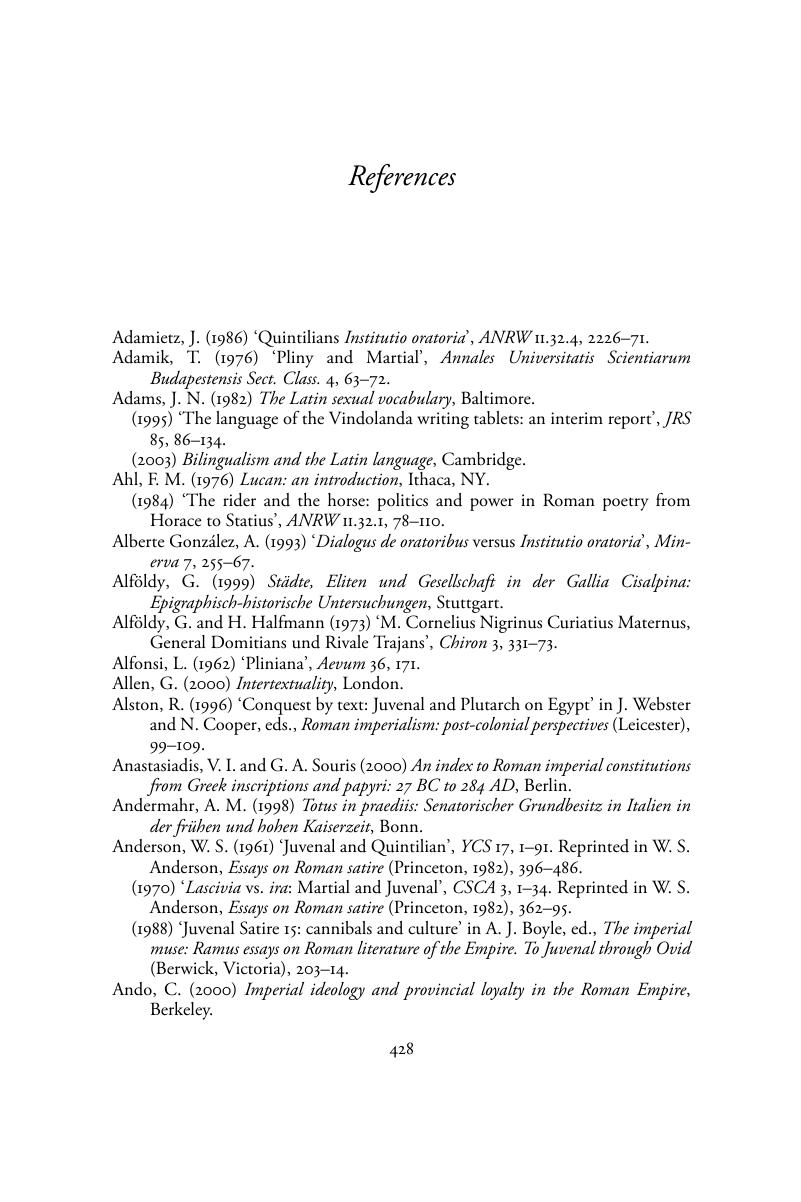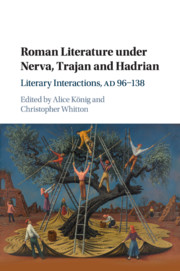Book contents
- Roman Literature under Nerva, Trajan and Hadrian
- Roman Literature under Nerva, Trajan and Hadrian
- Copyright page
- Dedication
- Contents
- Figure
- Contributors
- Preface
- Abbreviations
- Introduction
- Part I Bridging Divides
- Part II Interactions on and off the Page
- Part III Into the Silence
- ENVOI/VENIO
- References
- Index Locorum
- General Index
- References
References
Published online by Cambridge University Press: 26 February 2018
- Roman Literature under Nerva, Trajan and Hadrian
- Roman Literature under Nerva, Trajan and Hadrian
- Copyright page
- Dedication
- Contents
- Figure
- Contributors
- Preface
- Abbreviations
- Introduction
- Part I Bridging Divides
- Part II Interactions on and off the Page
- Part III Into the Silence
- ENVOI/VENIO
- References
- Index Locorum
- General Index
- References
Summary

- Type
- Chapter
- Information
- Roman Literature under Nerva, Trajan and HadrianLiterary Interactions, AD 96–138, pp. 428 - 462Publisher: Cambridge University PressPrint publication year: 2018
References
- 1
- Cited by



